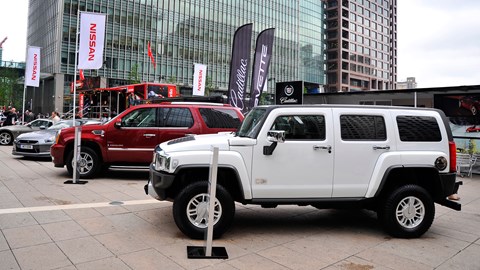► Vice President of GM’s Global Design at his last corporate event
► Festival of Speed marks the end of a 44-year career at GM
► What kind of legacy has Welburn left behind?
Chances are that if you live outside North America, even the most ardent enthusers of all things automotive are unlikely to have heard of Edward T. Welburn, Jr. But you should have.
On 1 July 2016 he’ll be retiring from General Motors after a 44-year career, which culminated in his appointment as the giant’s sixth design leader back in 2005. To mark his signing off, Welburn was invited to Goodwood’s Festival of Speed as a special guest of Vauxhall.
Vauxhall doesn’t have its own design department, does it?
Very true – all Vauxhalls have been designed in Germany for years, since 2007 under the direction of Brit Mark Adams, Opel’s Vice President of Design.
It wasn’t always that way – back in the 1960s Vauxhall’s design department was thriving under the auspices of Wayne Cherry (who later designed the Calibra), regularly serving up a selection of captivating concept cars, demolishing preconceptions of what a manufacturer of wholesome family saloons ought to be up to.
That charismatic era of rakish Vauxhall concepts, such as the XVR and its 2016 hat-tip, the GT, was the backdrop to Welburn’s final official GM duty before working under the personal invitation of Mary Barra, Chair and CEO, to oversee the creation of a new design centre.
How did Welburn embark on a car design career?
Family legend has it that while still a toddler in the early 1950s, Welburn would take to drawing rudimentary car shapes in the blank gatefolds of his mothers book.
Aged eight, a visit to the Philadelphia auto show ensured young Welburn’s gazed was fixed upon the Cadillac Cyclone concept. He was hooked.
A few years later he had the nous to contact GM’s Detroit design HQ to seek advice on making a living from designing cars.
He followed the advice to the letter, graduating from Howard University’s College of Fine Arts in Washington DC in 1972, the same year he began his career at GM.
So which of Welburn’s designs do I know?
Certain designers’ names spill beyond the confines of car aficionados’ conversations into wider motor-based appreciation: ‘Pinin’ Farina, Sir Alec Issigonis and Patrick le Quement’s names are notes for ground-breaking cars they penned.
Welburn’s portfolio isn’t especially well-known on this side of the Atlantic, following long stints at Buick, Oldsmobile, Saturn and the large truck division, with the Hummer H3 (below) and Cadillac Escalade being the most recognisable to British eyes.

Chances if you’ve seen any of the General Motors cars in Michael Bay’s Transformers franchise, they’re the work of Welburn and his designers – he even had a cameo role in the most recent film.
Welburn cites the ’63 Corvette Sting Ray coupe as one of his biggest influences but also ensures his work his inspired by architecture and birds – without going as far as full-on biomimicry.
So if he’s not designed any ‘classics’, why’s Welburn so noteworthy?
For an America emerging from the struggle for civil rights in the 1960s, Welburn’s appointment was significant as first African American to be employed by GM’s design department.
He blazed a trail for people of colour in the US motor industry, demonstrating that career opportunities lay well beyond the scope of the assembly line and the accompany blue-collar workwear.
As his career draws to a close, he’s the most senior African American employed by a car manufacturer, with 2500 people reporting directly to him across 10 design studios globally.
It’s Welburn’s global vision that Mark Adams pinpoints as his greatest legacy for General Motors. During the mid-1990s, Welburn’s spell at Saturn ensured regular visits across to GM’s design studio where he realised the benefits – both in terms of cost savings and preventing duplicate technology from being developed – of close integration of the worldwide design teams.
Now, across seven countries and dozens of nationalities, there’s a much closer, united integration which Adams claims will benefit GM as a whole: ‘Take the C7 Corvette (below) – rather than direct the styling himself, Ed opened it up to all of our designers to submit sketches. That’s the mark of the man.’
Seems Michael Simcoe from GM Australia Design has big shoes to fill as Edward’s replacement.
